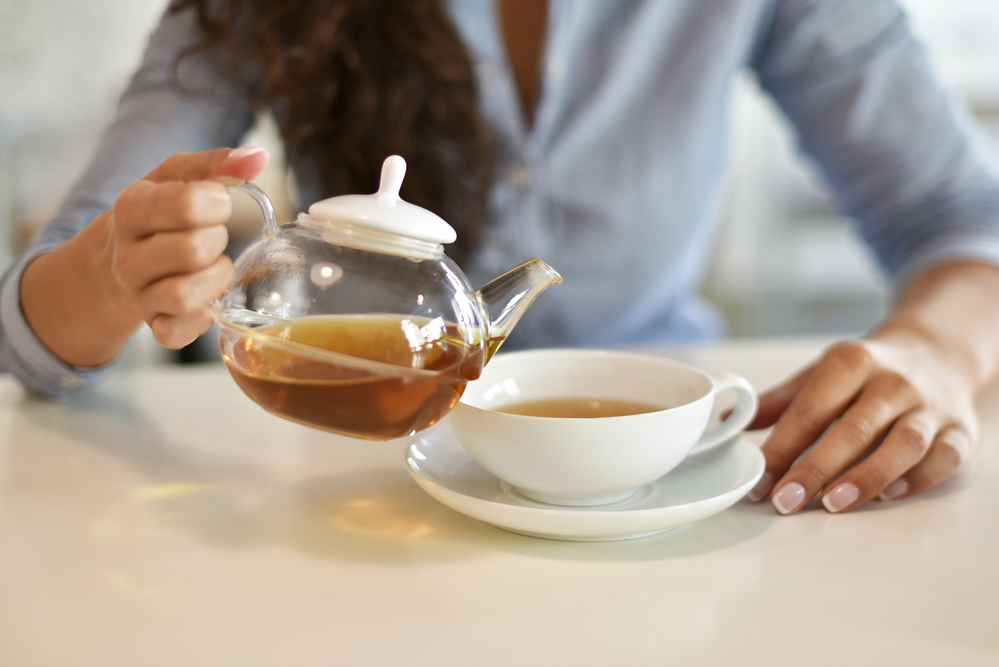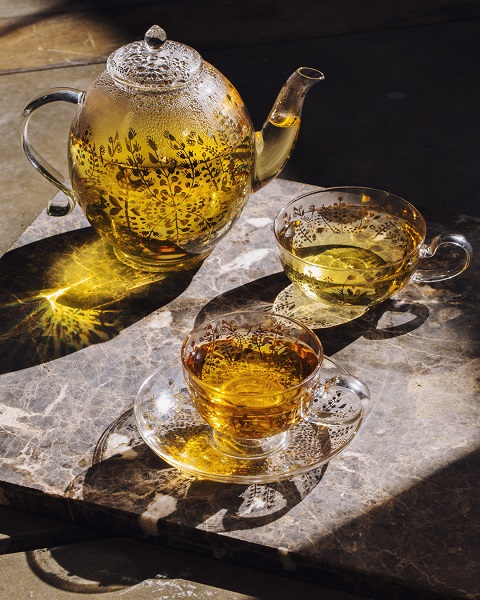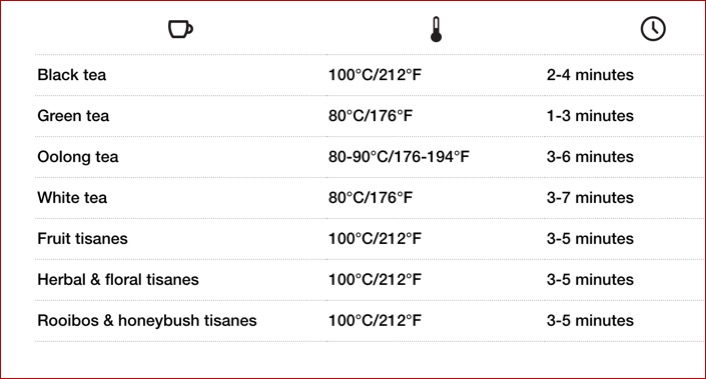Tea – a healthier alternative to coffee

I’ve always been a big fan of tea. I like it just about any way it comes and as it comes in so many varieties and flavours, I’m spoilt for choice. The thing I like most about tea is that it not only tastes great, but it’s good for me too. All those antioxidants and a compound called L-theanine which functions to boost alertness and awareness.
Why is tea so good for you?
Tea is a real “super food”. Both green and black teas are rich in antioxidants called catechins. Green tea has a number of simpler catechins whereas black tea has more complex ones.
One of these catechins, EGCG, has been widely studied and has been shown to inhibit the growth of tumours in animals. Couple this with the alertness boosting properties of L-theanine with a little caffeine and you not only have a refreshing drink but a health-boosting one as well.

The lowdown on caffeine
In general, teas are lower in caffeine than coffee. It’s not possible to say though that black teas have more caffeine than green. Some green teas are low in caffeine while others, like matcha, are higher. If you’re looking to have a stimulating cuppa while cutting down on your caffeine then tea is a great, healthy choice.
There are also many great options for those who want to cut out caffeine altogether. Unlike coffee where you have to go for a decaffeinated option there are many teas that are naturally caffeine-free. For example, herbal teas (tisanes) or Rooibos and Honeybush teas – all of which are naturally caffeine-free. For those who aren’t fond of herbal tisanes, the latter two are good options as they taste like ‘regular’ teas.
 Naturally caffeine-free teas may be a useful option for anyone who is sensitive to caffeine as well as pregnant women, adolescents and individuals taking certain medications (such as anti-depressants like lithium and anticoagulants) which have a documented interaction with caffeine.
Naturally caffeine-free teas may be a useful option for anyone who is sensitive to caffeine as well as pregnant women, adolescents and individuals taking certain medications (such as anti-depressants like lithium and anticoagulants) which have a documented interaction with caffeine.
The decaffeination process is hardly ‘natural’ and is akin to ‘processing’. It certainly is not ‘better’ than sipping a natural tea made from a whole food like Rooibos or Honeybush.
Most decaffeination methods use water, solvents, or a combination of the two, when extracting caffeine from raw unroasted beans. There are other innovative methods coming to the fore, too, like carbon dioxide and charcoal extraction.
Coffee beans are washed in the solvent until the caffeine has been extracted from it, then the problem remains of how to remove the solvent afterwards!
After heating, a residue of the solvent remains behind - some 2 parts per million, below the limit set by the EU of 5 parts per million.
So for my part, I prefer to either have some caffeine OR else switch to a tea that is naturally caffeine-free.
A tea for all seasons (and tastes)
Specialty tea store, T2 , has an enormous variety of teas for you to choose from (in tea bags as well as loose leaves). They have specialty teas such as herbals, green teas, matcha and indigenous Australian blends to name only a few.
The perfect cuppa!
Whether you prefer the ritual of brewing loose leaf tea in a special pot or you only have time to pop a tea bag into a cup there are a couple things you can do ensure you have a perfect cuppa. The first is the water temperature, and the second the brewing time. The graphic below (courtesy of the T2 website) shows the optimum temperature and time for each tea type.

You can find more tea tips and tricks here.
The bottom line
If you’re looking for a beverage that is healthier than coffee, and gently stimulating without giving you that caffeine “wired” feeling then tea really is a healthier option to coffee for your mid-morning or afternoon break. If you really want to spoil yourself, then why not try one of T2’s decadent blends such as Apple Maple Muffin, Blueberry Crumble or Jam on Toast!
 Something else I’ve noticed is that, just as we eat with our eyes, beautifully presented food tastes better, so drinking tea from a beautiful china cup or mug always tastes better to me than a thick pottery mug. Check out these fabulous selection of teapots and cups (shown above) to team up with your favourite tea and enhance your tea enjoyment.
Something else I’ve noticed is that, just as we eat with our eyes, beautifully presented food tastes better, so drinking tea from a beautiful china cup or mug always tastes better to me than a thick pottery mug. Check out these fabulous selection of teapots and cups (shown above) to team up with your favourite tea and enhance your tea enjoyment.



